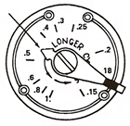
Figure 1. (Click on the image for an enlarged view.)
In this column, Jim Johnson, director of training for Technical Training Associates, presents a specific HVACR equipment problem and invites readers to submit their diagnosis. From those who submit the correct answer by the stated deadline, there will be a prize drawing. The answer, and the prize winner, will be announced in the next column, along with another problem for you to solve.
SOLUTION TO OUR LAST PROBLEM
To begin, here is the answer to our Dec. 3, 2007 issue troubleshooting problem, “An Electric Heating System That’s Not Heating Enough.”In order to get this unit back on line, we need to replace two heating elements, HE1 and HE2. As sometimes happens in residential heating units, customers don’t realize that one element has gone out at some point in the past, and may not call for service until the heating capacity of the unit drops low enough for them to notice (with the failure of the second element). Both elements were proven to have failed since proper voltage was applied, but the measured current draw in their circuits was zero.
From those readers who sent in the correct diagnosis, the prize drawing winner is Mark Sellner.
And, now on to this issue’s problem.

Figure 2. (Click on the image for an enlarged view.)
A GAS FURNACE FOLLOW-UP SERVICE CALL
Since we’re still in the “heating season mode” our troubleshooting problem this time around is focused on a customer who has called to say that “the room gets too warm before the furnace cycles off.” This is actually a follow-up situation, and here are some details:• This is a new tenant in a residential rental, and after moving in and turning up the heat, they note that the burners turn on and the blower motor operates, but it seems to them that the house gets too warm before the unit cycles off.
• When you arrive, you note that this is a standard natural gas upflow furnace, with a standard electromechanical thermostat, which, according to the landlord (who took it upon himself to install), was installed last season when the furnace wasn’t operating at all.
• In your evaluation of the system’s performance, you choose a set point of 70°F and note that the room temperature does, in fact, go above that before the burners cycle off and the blower motor shuts down.
To begin your troubleshooting process, you disconnect the wiring from the thermostat sub-base and, using an analog ammeter and ten-wire wrap, you check the current draw of the control circuit. Figure 1 shows you the results of your test, and Figure 2 shows you the setting of the heat anticipator on the thermostat sub-base.
And your troubleshooting question is: What needs to be done in order to get this unit operating normally again?
If you have the answer to this question, click onwww.technicaltrainingassoc.comand submit your diagnosis viaThe NEWSlink. All correct answers received by the deadline of March 1, 2008 will be entered into a prize drawing for a Fieldpiece SC46 Clamp-on Digital Meter. The correct answer to this question, along with the results of the drawing, will be published in the April 7, 2008 issue.
Author's Side Note on Our Troubleshooting Problems
When you submit your diagnosis, feel free to include any additional thoughts and opinions about the scenario we present in addition to the answer to the problem. What do you think about the landlord in his do-it-yourself role? How about the choice of the replacement thermostat (about as inexpensive a model as possible) in a rental situation? How about using a digital meter rather than an analog meter to accomplish the test we illustrated? Any other thoughts on what you, as a service professional, should insist on doing to make sure you don’t find yourself in a problem situation after you leave this house? We will be publishing reader input along with the answer next time around.Publication date:02/04/2008


Report Abusive Comment